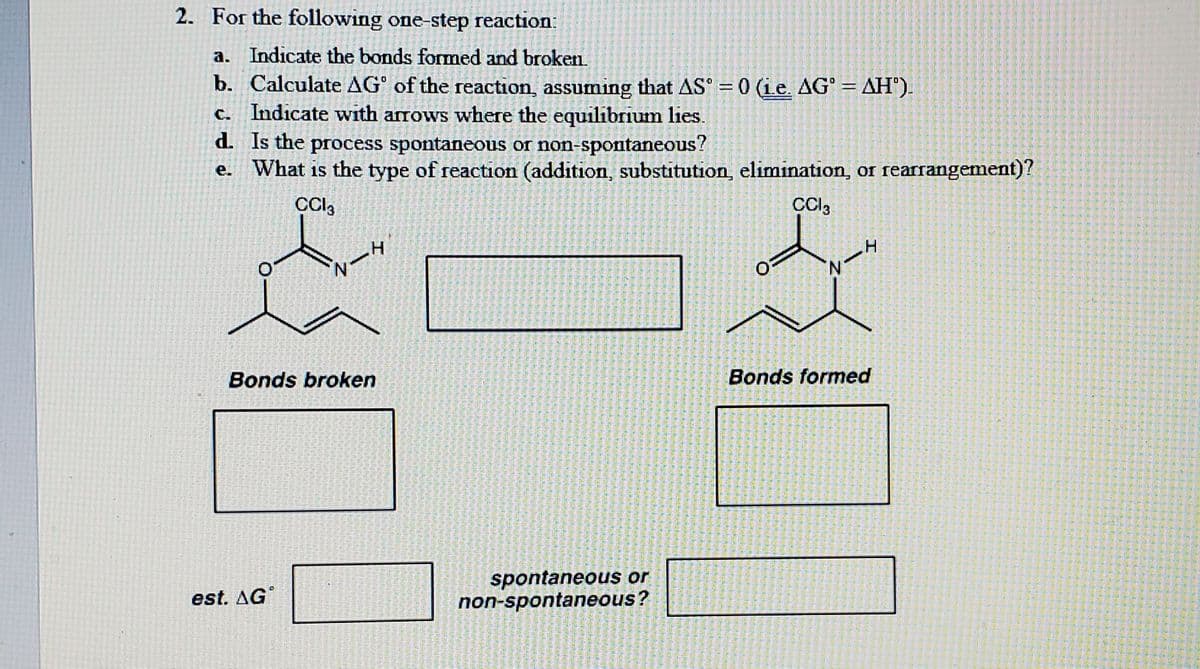For the following one-step reaction: a. Indicate the bonds formed and broken b. Calculate G of the reaction c. Indicate with arrows where the equilibrium lies d. Is the process spontaneous or non spontaneous e. What is the type of reaction (addition, substitution, elimination, or rearrangement)
For the following one-step reaction: a. Indicate the bonds formed and broken b. Calculate G of the reaction c. Indicate with arrows where the equilibrium lies d. Is the process spontaneous or non spontaneous e. What is the type of reaction (addition, substitution, elimination, or rearrangement)
Organic Chemistry: A Guided Inquiry
2nd Edition
ISBN:9780618974122
Author:Andrei Straumanis
Publisher:Andrei Straumanis
Chapter17: Conjugation And Molecular Orbital (mo) Theory
Section: Chapter Questions
Problem 5E
Related questions
Question
For the following one-step reaction:
a. Indicate the bonds formed and broken
b. Calculate G of the reaction
c. Indicate with arrows where the equilibrium lies
d. Is the process spontaneous or non spontaneous
e. What is the type of reaction (addition, substitution, elimination, or rearrangement)

Transcribed Image Text:2. For the following one-step reaction:
a. Indicate the bonds formed and broken.
b. Calculate AG° of the reaction, assuming that AS = 0 (ie. AG' = AH").
c. Indicate with arrows where the equilibrium lies.
d. Is the process spontaneous or non-spontaneous?
e. What is the type of reaction (addition, substitution, elimination, or rearrangement)?
Bonds broken
Bonds formed
spontaneous or
non-spontaneous?
est. AG
Expert Solution
Step 1
Answer is given below
We have to find
a. Indicate the bonds formed and broken
b. Calculate G of the reaction
c. Indicate with arrows where the equilibrium lies
d. Is the process spontaneous or non spontaneous
e. What is the type of reaction (addition, substitution, elimination, or rearrangement
Trending now
This is a popular solution!
Step by step
Solved in 2 steps with 1 images

Knowledge Booster
Learn more about
Need a deep-dive on the concept behind this application? Look no further. Learn more about this topic, chemistry and related others by exploring similar questions and additional content below.Recommended textbooks for you

Organic Chemistry: A Guided Inquiry
Chemistry
ISBN:
9780618974122
Author:
Andrei Straumanis
Publisher:
Cengage Learning

Organic Chemistry: A Guided Inquiry
Chemistry
ISBN:
9780618974122
Author:
Andrei Straumanis
Publisher:
Cengage Learning